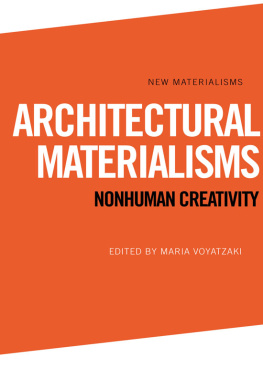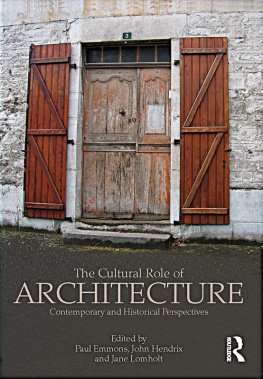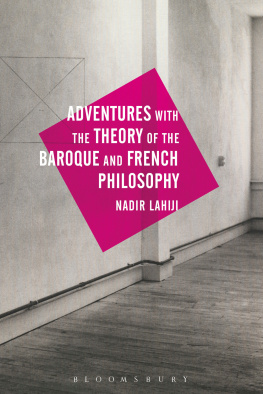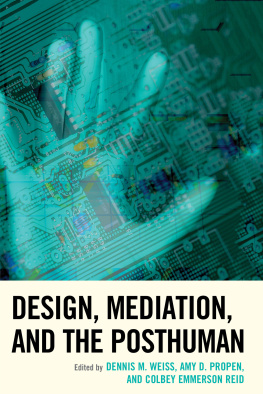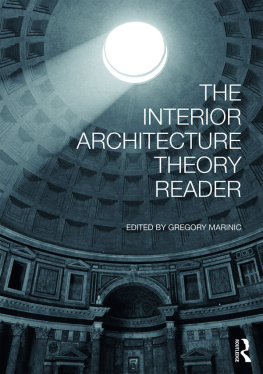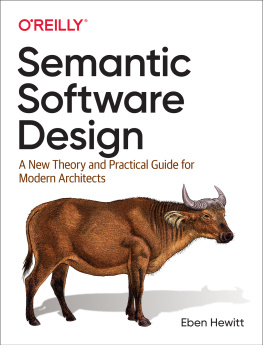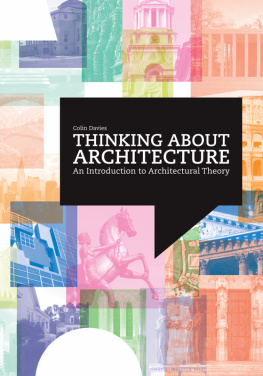
Architectural Materialisms
New Materialisms
Series editors: Iris van der Tuin and Rosi Braidotti
New Materialisms asks how materiality permits representation, actualises ethical subjectivities and innovates the political. The series will provide a discursive hub and an institutional home to this vibrant emerging field and open it up to a wider readership.
Editorial Advisory board
Marie-Luise Angerer, Karen Barad, Corinna Bath, Barbara Bolt, Felicity Colman, Manuel DeLanda, Richard Grusin, Vicki Kirby, Gregg Lambert, Nina Lykke, Brian Massumi, Henk Oosterling, Arun Saldanha
Titles available
What if Culture was Nature all Along?
Edited by Vicki Kirby
Critical and Clinical Cartographies: Architecture, Robotics, Medicine, Philosophy
Edited by Andrej Radman and Heidi Sohn
Architectural Materialisms: Nonhuman Creativity
Edited by Maria Voyatzaki
Forthcoming titles
Queer Defamiliarisation and New Materialism: Writing Feminist Matter(s)
By Helen Palmer
Place-making: Art, Practice, Pedagogy
By Tara Page
Architectural Materialisms
Nonhuman Creativity
Edited by Maria Voyatzaki
EDINBURGH
University Press
Edinburgh University Press is one of the leading university presses in the UK. We publish academic books and journals in our selected subject areas across the humanities and social sciences, combining cutting-edge scholarship with high editorial and production values to produce academic works of lasting importance. For more information visit our website: edinburghuniversitypress.com
editorial matter and organisation Maria Voyatzaki (Vogiatzaki), 2018
the chapters their several authors, 2018
Edinburgh University Press Ltd
The Tun Holyrood Road
12(2f) Jacksons Entry
Edinburgh EH8 8PJ
Typeset in 11/13 Adobe Sabon by
IDSUK (DataConnection) Ltd, and
printed and bound in Great Britain.
A CIP record for this book is available from the British Library
ISBN 978 1 4744 2057 0 (hardback)
ISBN 978 1 4744 2058 7 (webready PDF)
ISBN 978 1 4744 2059 4 (epub)
The right of Maria Voyatzaki (Vogiatzaki) to be identified as the editor of this work has been asserted in accordance with the Copyright, Designs and Patents Act 1988, and the Copyright and Related Rights Regulations 2003 (SI No. 2498).
Contents
Acknowledgements
I sincerely hope that this collection will prove to be a landmark and that its landscapes of thought can reboot the debate on architectural materialisms in times when nonhuman creativity can reorient the discipline and its cognitive mapping. It has been a pleasure working with the important thinkers who have made invaluable contributions to this book. I am deeply indebted for their encouragement and patience in making it happen. Furthermore, I am thankful for the friendships that this collaboration has strengthened or yielded. Thanks to Lars, Manuel, Kas, Mark, Marcos, Jussi, Luciana, Pia, Julieanna, Jen, Fernando, Levi and Vera. The support of the series editors and the publishing team and advisors has been tremendous and, for this, I wish to express my thanks, especially to Rosi Braidotti, Iris van der Tuin, Carol Macdonald, Esrev Ersoy, Kirsty Woods, Andrew Kirk and James Dale. I would also like to thank my local team, Lina Di Ciocco-Kiryttopoulou and Dimitris Apostolidis, for contributing to the proofreading, suggestions and formatting of the book. Last but not least, I owe gratitude to Constantin Spiridonidis and Emmanouil Zaroukas who have been my lifes spiritual companions, in a reciprocal, affective and sympathetic teacherstudentteacher perpetual intellectual feedback loop, often cross-fertilising the missing parts of each others past, present, and times yet to come.
Architectural Materialisms:
Nonhuman Creativity
Maria Voyatzaki
This volume gathers more than a dozen voices from a diverse group of architects, designers, performing artists, film-makers, media theorists, philosophers, mathematicians, programmers, researchers and educators. While originating from Austria, Colombia, Finland, Mexico, New Zealand, Germany, Great Britain, Greece, Italy, Portugal, Switzerland, the Netherlands and the USA, they are all intellectual migrants scholarly nomads scattered around three continents, speaking eight different native languages. Diversity in this book is also a function of a convergence of well-established authors who pioneered the discussion on architectural materialisms and the emerging figures of the younger generation who are currently researching the subject. With the exception of the recently published Critical and Clinical Cartographies: Architecture, Robotics, Medicine and Philosophy, and after a long period of silence and apathy in the literature on architecture and creativity, due to a preoccupation with hands-on experimentation and tooling as well as with isolating domain-biased research, it is now high time to reflect on this matter critically and globally as such contemplation is not just timely, but essential.
The Vitality of Matter
The belief that humans were driven out of their natural habitat or environment immediately after their creation is deep-rooted and has been cultivated since the ancient myths of human origin depicted in Greek cosmogony and other religious discourses. This belief was based on the notion that humans differed in relation to all other beings, thus justifying the human imperative stance towards all other beings around them. Their further development and evolution were not only dictated by their distinctive natural characteristics, but were primarily defined by the humans had to act upon matter, developing techniques which, although regarded as the horizon of all possibilities to come, were, nevertheless, repressed as an object of thought throughout the anthropocentric tradition.
Life and matter were conceived as separate entities, parsing the sensible world as vibrant life beings and dull matter things. In this division, matter was thought as passive, raw, brute or inert, moving or being transformed only on encountering an external force or agent, following a linear logic of cause and effect. It was uniform, discrete, measurable, quantifiable and suitable for exploration by Newtonian physics and Euclidean geometry. The constructed, the artificial, the artefact and all cultural manifestations had to follow the predominant features of the alive into an idea of teleologically ordained, rational progress as Rosi Braidotti points out.
Abstract preconceptions about the human-alive developed in the context of this widespread and well-established assumption of the binary opposition between self-regulating life and matter, between the given and the constructed, the natural and the artificial, the soul and the body. They were based upon what was commonly taken as distinctive and unique about humans, the gifts of the gods, such as language, consciousness, intelligence, rationality, intentionality, subjectivity, but also their derivatives, such as values, meaning, morality and beauty. All these appeared more significant as they were directly used to affirm human dominance over nature and the material world.
The polarisation between life and matter led humans to believe that the only source of vitality was the soul or the spirit, thus stifling their opportunity to discover and explore other living powers, those of material formations, not only edibles, commodities, artefacts or machines, but also physical phenomena and materials. This limitation inhibited the appreciation of their strong impact on human wills, behaviours, designs, decisions, mental and bodily structures and identities, their lives, social structures, institutions and politics, and, ultimately, delayed their project to develop sustainable, symbiotic relations with them.
Next page
